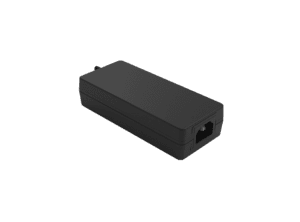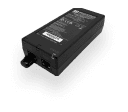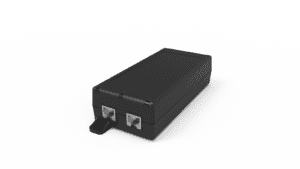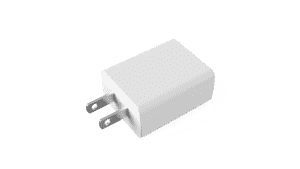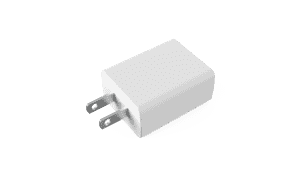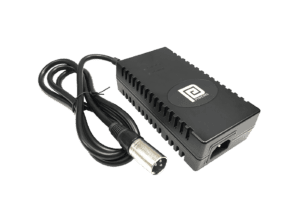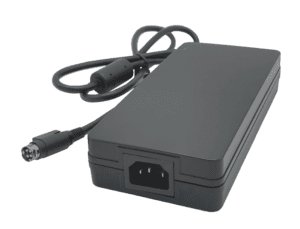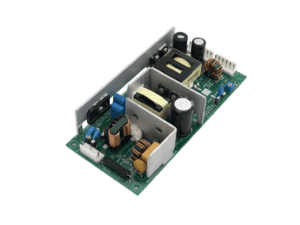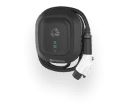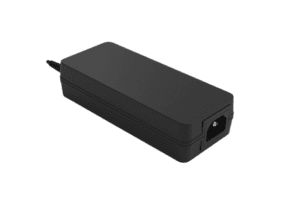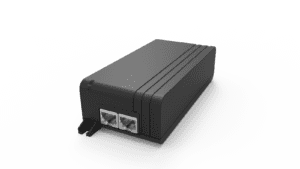BLOG
Power over Ethernet Power: Exploring Wattage and Voltage Ranges for Optimized Performance in PoE Applications
Table of contents
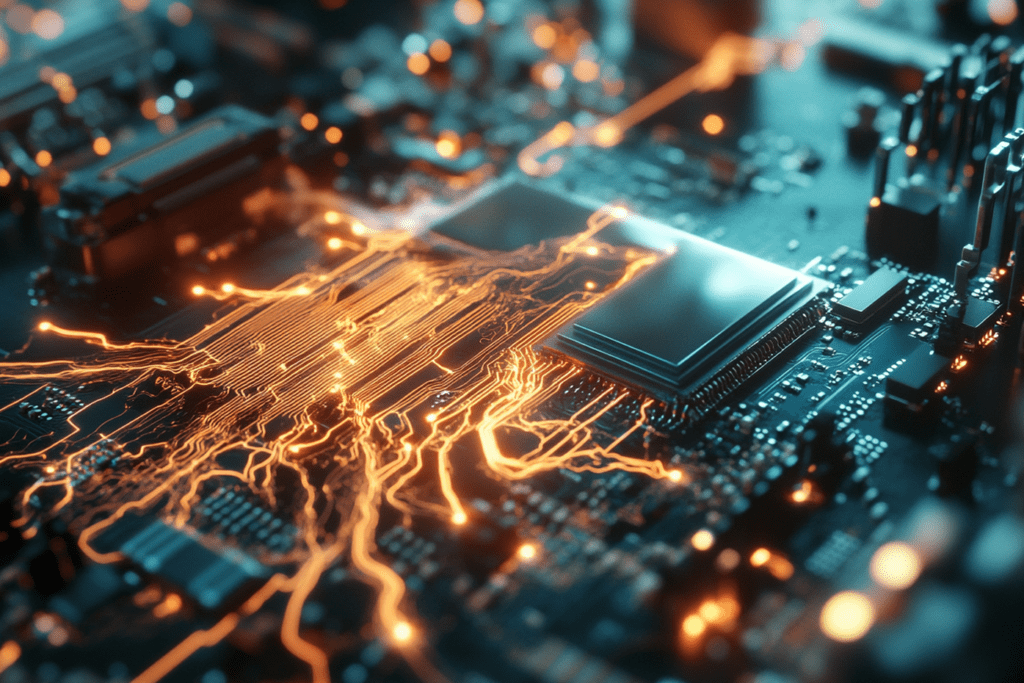
Power over Ethernet (PoE) technology has become a cornerstone in modern network infrastructure, allowing the transmission of power and data over a single Ethernet cable. This innovation simplifies installations, reduces costs, and enhances the flexibility of network design. For businesses looking to leverage PoE, understanding the wattage and voltage ranges is crucial for optimizing performance and ensuring the reliable operation of connected devices. Phihong USA, a leading provider of OEM and manufacturing solutions, offers a comprehensive range of PoE products tailored to meet the diverse needs of various industries.
In this article, we will explore the basics of PoE power, including standard wattage and voltage ranges and how to optimize PoE performance for different applications. We will also discuss power management and safety considerations, along with future trends in PoE technology.
Understanding PoE Power: Wattage and Voltage Basics
Power over Ethernet delivers both power and data through a single Ethernet cable, enabling devices such as IP cameras, wireless access points, and VoIP phones to operate without the need for separate power supplies. The fundamental components of PoE power include wattage and voltage, which determine the amount of power delivered to each device.
Wattage, measured in watts (W), represents the total power delivered to a device. Voltage, measured in volts (V), indicates the electrical potential difference that drives the current through the Ethernet cable. The combination of these two factors determines the power capacity and efficiency of the PoE system.
PoE technology adheres to specific standards, such as IEEE 802.3af, 802.3at, and 802.3bt, which define the maximum wattage and voltage levels. These standards ensure compatibility and interoperability between PoE devices and power sources. Understanding these basics is essential for selecting the right PoE equipment and ensuring optimal performance for various applications.
Phihong USA provides a range of PoE solutions that comply with these standards, offering reliable and efficient power delivery for diverse applications. By understanding the basics of PoE power, businesses can make informed decisions about their network infrastructure and achieve greater efficiency and reliability.
Standard PoE Wattage and Voltage Ranges
IEEE 802.3af – (Max 15.4W)
The IEEE 802.3af standard, commonly referred to as just PoE, provides up to 15.4 watts of power per port. This level of power is suitable for devices with lower power requirements, such as VoIP phones and basic IP cameras. The standard specifies a voltage range of 44 to 57 volts, with 48 volts being the most common. This voltage range ensures reliable power delivery over typical Ethernet cable lengths. Engineers can leverage this standard for cost-effective deployment of low-power devices without needing separate power supplies, simplifying network design and reducing installation costs.
IEEE 802.3at – (Max 30W)
The IEEE 802.3at standard, known as PoE+, increases the available power to 30 watts per port. This higher power level supports more demanding devices, such as advanced IP cameras with pan-tilt-zoom (PTZ) capabilities and high-performance wireless access points. PoE+ voltage range is between 50 and 57 volts, ensuring compatibility with existing infrastructure while providing additional power. This standard is ideal for environments requiring enhanced functionality and performance from connected devices, offering greater flexibility and scalability for network expansions and upgrades.
IEEE 802.3bt – (Max 60W – 90W)
The IEEE 802.3bt standard, also called PoE++, further extends the power delivery capabilities, offering up to 60 watts (Type 3) and 90 watts (Type 4) per port. Type 3 is 50-57V and Type 4 is 52-57V. This significant increase supports high-power applications, such as video conferencing systems, LED lighting, and networked displays. The voltage range for PoE++ remains consistent with earlier standards, ensuring seamless integration with existing PoE infrastructure while delivering higher power levels. Engineers can use this standard to design robust and versatile networks capable of powering a wide range of devices, enabling more complex and high-power solutions without compromising on reliability or efficiency.
Standard Wattage and Voltage Ranges for Various PoE Applications
Low Power PoE Injector Applications (13W – 30W):
IP Cameras: Low power injectors are frequently employed to power Internet Protocol (IP) cameras and other surveillance systems, including Network Video Recorders (NVRs). This ensures reliable video monitoring and security.
Access Control Systems: PoE injectors can supply power to access control devices such as card readers, keypads, door controllers, and biometric fingerprint or facial recognition devices. This simplifies installation and maintenance by eliminating the need for separate power supplies.
VoIP Phones: Voice over Internet Protocol (VoIP) phones and intercoms in offices or call centers often utilize PoE injectors for individual phone power. This reduces cable clutter and provides a seamless communication setup.
Point-of-Sale (POS) Systems: In retail environments, PoE injectors power devices like barcode scanners and card readers. This enhances operational efficiency by providing a reliable power source for critical sales and transaction equipment.
Wireless Bridges: Low power injectors are ideal for powering wireless bridges, which connect separate wired networks or segments, allowing communication between devices on different networks as if they were directly connected by cable, even over long distances. This is essential for extending network coverage in large areas.
Smart Home Devices: Low power injectors can also power smart home devices like smart thermostats, smart locks, and home security systems, providing a streamlined and efficient power solution for connected home environments.
Medium Power PoE Injector & Midspan Applications (45W – 90W):
Small to Medium-Sized Networks: Medium power injectors can easily power various devices in small to medium-sized networks and Network Attached Storage (NAS) hubs. This supports robust data storage and network performance.
Digital Signs: These injectors are commonly used to power large digital displays, media players, and small to medium-sized LED displays. This is crucial for advertising, information dissemination, and customer engagement in public spaces.
Building Automation Systems: PoE injectors power sensors, actuators, and other building components, facilitating centralized control and monitoring of functions such as lighting, HVAC, and security. This improves energy efficiency and operational control in smart buildings.
Monitoring Systems: Medium power injectors are suitable for outdoor environmental monitoring systems, remote sensors, and IoT devices deployed in harsh or remote environments. This enables real-time data collection and analysis for better decision-making and resource management.
Wireless Access Points: Medium power injectors can provide the necessary power for wireless access points, ensuring robust and widespread Wi-Fi coverage in office buildings, campuses, and public areas.
Video Conferencing Equipment: Medium power injectors can power video conferencing equipment, including cameras and monitors, ensuring seamless and uninterrupted communication for businesses and educational institutions.
Interactive Kiosks: PoE injectors are used to power interactive kiosks in retail stores, airports, and other public spaces, providing information and services to users efficiently.
PoE Power Management and Safety Considerations
Effective power management is crucial for maintaining the performance and safety of PoE networks. Power management involves monitoring and controlling the distribution of power to ensure that all connected devices receive the necessary wattage without overloading the system.
Advanced PoE management tools provide real-time insights into power usage, allowing network administrators to allocate power efficiently and identify potential issues before they impact performance. These tools can help prevent power overloads, ensure balanced power distribution, and extend the lifespan of PoE equipment.
PoE power sourcing equipment (PSE) can come with advanced PoE management features that can provide administrators real-time insights as well as prevent power
Safety considerations are also paramount in PoE networks. Overloading a PoE system can lead to overheating, equipment failure, and potential safety hazards. Ensuring that PoE devices and power sources comply with industry standards and are properly installed can mitigate these risks.
Simple Network Management Protocol (SNMP) in PoE Products
Simple Network Management Protocol (SNMP) is a widely used network management protocol that facilitates the monitoring and control of network devices. SNMP allows network administrators to manage and track various components of their infrastructure, including routers, switches, servers, and PoE devices. By providing a standardized framework for communication, SNMP enables real-time data collection and analysis, making it easier to monitor performance, identify issues, and implement necessary adjustments. In the context of PoE products, SNMP plays a critical role in enhancing power management and contributing to network safety. Here are some key features and benefits of SNMP:
Real-Time Monitoring: SNMP enables continuous monitoring of power consumption for each connected PoE device. This real-time data allows administrators to make informed decisions about power allocation, ensuring that all devices receive the necessary wattage without overloading the system.
Alert Notifications: SNMP can send alerts to administrators when abnormal conditions occur, such as power overloads or device failures. This capability allows for prompt intervention, reducing the risk of overheating and equipment damage.
Configuration Management: Through SNMP, network administrators can remotely configure PoE settings, such as power priorities and port configurations, without needing physical access to devices. This flexibility is crucial for maintaining optimal power distribution and managing devices efficiently.
Performance Reporting: SNMP facilitates the generation of reports on power usage and device performance over time. These insights help administrators identify trends, plan for future capacity needs, and optimize the overall performance of the PoE network, providing vital insights into connected devices such as health of the device, power usage, and network activity.
Automated Control: SNMP can automate power management tasks, such as scheduling power cycling for devices or adjusting power levels based on usage patterns. In cases where a device becomes unresponsive, administrators can automatically reset or power-cycle the device remotely. This capability reduces downtime and minimizes manual intervention, enhancing overall network efficiency.
Best Practices for PoE Power Management and Safety
To ensure optimal performance and safety in PoE networks, consider the following best practices:
Conduct Regular Audits: Regularly audit your PoE network to ensure all devices are receiving appropriate power levels and to identify any potential issues.
Use Compliant Equipment: Always use PoE equipment that complies with industry standards (e.g., IEEE 802.3af/at/bt) to ensure reliability and safety.
Monitor Power Usage: Utilize SNMP and other power management tools to continuously monitor power usage and receive alerts for any abnormalities.
Plan for Capacity: Design your PoE network with adequate capacity to handle current and future power demands, considering the addition of new devices.
Implement Redundancy: Incorporate redundancy in your PoE power supply to prevent single points of failure and enhance network reliability.
Ensure Proper Installation: Follow manufacturer guidelines for the installation of PoE devices and power sources to prevent mishaps and ensure optimal performance.
By implementing these best practices, businesses can effectively manage PoE power distribution, ensure network safety, and extend the lifespan of their PoE equipment.
Future Trends in PoE Power and Applications
As PoE technology continues to evolve, new trends and advancements are emerging that will further enhance its capabilities and applications. One significant trend is the increasing power capacity of PoE systems, driven by the development of new standards and technologies.
The growing adoption of smart building systems, IoT devices, and advanced automation solutions is driving demand for higher power PoE solutions. These applications require robust and efficient power delivery to support a wide range of devices and functions.
Phihong USA is at the forefront of these trends, developing innovative PoE solutions that meet the evolving needs of modern businesses. By staying ahead of technological advancements, Phihong helps businesses leverage the full potential of PoE technology to drive efficiency, sustainability, and growth.
Best Practices
- Stay Informed on Advancements: Keep up-to-date with the latest developments in PoE technology to leverage new capabilities and features. Staying informed helps businesses adopt cutting-edge solutions and maintain a competitive edge.
- Invest in Scalable Solutions: Choose PoE solutions that can grow with technological advancements and future applications. Scalable solutions ensure that the network remains adaptable and future-proof.
- Incorporate Sustainable Practices: Integrate PoE with renewable energy sources and energy-efficient technologies to create a more sustainable network infrastructure. Sustainable practices support environmental goals and reduce operational costs.
CLIENT'S QUOTE
Phihong's Power-Over-Ethernet solutions have transformed our network, boosting efficiency and reducing costs. Their seamless integration has simplified both installation and maintenance.
Explore More with Phihong USA
As we conclude our exploration of PoE technology, it’s evident how these innovations are streamlining power and data integration across various industries. Phihong USA stands at the forefront of this technological advancement, offering a diverse range of power solutions designed to meet the evolving needs of modern industries.
Phihong USA’s extensive product lineup includes:
- Power over Ethernet (PoE) Solutions: Delivering reliable power and data transmission over a single cable, ideal for simplifying network installations and reducing costs.
- AC/DC Adapters and Power Supplies: From compact adapters to industrial-grade power supplies, Phihong provides solutions that ensure efficiency and reliability in various applications.
- Battery Chargers: Customizable chargers for lithium-ion and lead-acid batteries, supporting a wide range of power requirements for mobility and industrial applications.
- Medical Power Supplies: Specialized power solutions designed to meet the stringent requirements of the healthcare industry, ensuring safety and reliability.
Phihong USA is committed to innovation and excellence, continually developing products that meet the highest standards of performance and reliability. Their global reach and dedication to customer support make them a trusted partner in powering the future.
Here are some useful links to explore Phihong USA’s offerings further and bring in new potential clients:
Visit Phihong USA to discover how their advanced power solutions can support your business needs. Whether you’re looking to upgrade your network, or find reliable power supplies, Phihong USA has you covered.
By choosing Phihong USA, you’re partnering with a leader in power technology, ensuring your operations run smoothly and efficiently with top-tier power solutions.

Contact Our Team Today!
Our dedicated sales team and international partners are prepared to support you with your latest projects and initiatives globally.
FAQ
What are the primary benefits of understanding PoE wattage and voltage ranges?
Understanding PoE wattage and voltage ranges is crucial for optimizing the performance of your network. By matching the power requirements of your devices with the appropriate PoE standard, you can ensure reliable operation and efficient power use. This knowledge helps in selecting the right PoE equipment, reducing the risk of overloading the system and enhancing the overall reliability and efficiency of your network. Additionally, understanding these ranges allows businesses to plan for future expansions and ensure their network infrastructure can accommodate new technologies and devices.
How does high power PoE differ from standard PoE?
High power PoE, enabled by the IEEE 802.3bt standard, provides significantly more power than standard PoE. While standard PoE (IEEE 802.3af) delivers up to 15.4 watts per port, and PoE+ (IEEE 802.3at) provides up to 25.5 watts per port, high power PoE can deliver up to 60 watts (Type 3) and 90 watts (Type 4) per port. This increased power capacity supports a wider range of high-power devices, such as video conferencing systems, LED lighting, and advanced industrial equipment. High power PoE is ideal for applications that require robust performance and reliability, enabling businesses to expand their use of PoE technology for more demanding applications.
What are the best practices for optimizing PoE performance?
Optimizing PoE performance involves several best practices, including matching power requirements, using high-quality cabling, and implementing power management tools. Ensuring that each device receives the appropriate level of power prevents issues such as underpowering or overloading, enhancing the reliability and performance of the network. Using high-quality Ethernet cables minimizes power loss and ensures reliable performance. Implementing advanced power management tools provides real-time insights into power usage, allowing network administrators to allocate power efficiently and identify potential issues before they impact performance. Additionally, planning for scalability ensures that the network can accommodate future growth and technological advancements.
How can PoE technology enhance the efficiency of industrial applications?
PoE technology enhances the efficiency of industrial applications by providing reliable power and data connectivity through a single cable. This integration simplifies the cabling infrastructure, reducing installation and maintenance costs. PoE supports a wide range of industrial devices, such as sensors, controllers, and monitoring systems, enabling seamless communication and control. High power PoE, in particular, can support complex machinery and advanced automation systems, ensuring uninterrupted operation and efficient power management. By leveraging PoE technology, industrial environments can achieve greater productivity, flexibility, and cost savings.
What future trends are expected in PoE technology?
Future trends in PoE technology include increased power capacities, integration with sustainable technologies, and support for smart and IoT devices. Advancements in PoE standards are leading to higher power capacities, enabling PoE to support more demanding applications and a wider range of devices. The integration of PoE with renewable energy sources and energy-efficient technologies is creating more sustainable and cost-effective network infrastructures. Additionally, as smart and IoT devices become more prevalent, PoE technology is evolving to provide reliable power and connectivity for these advanced applications. Staying informed on these trends allows businesses to adopt cutting-edge solutions and maintain a competitive edge.

